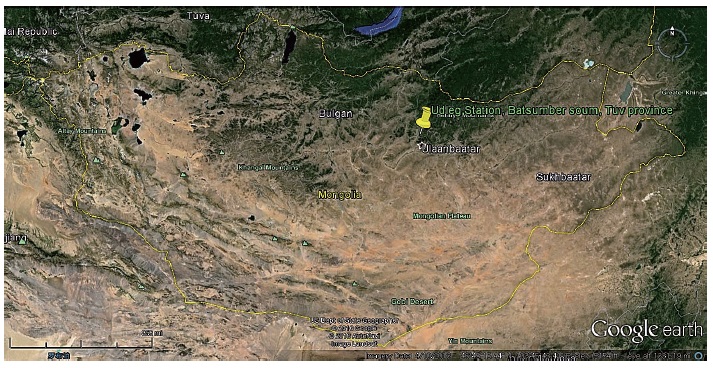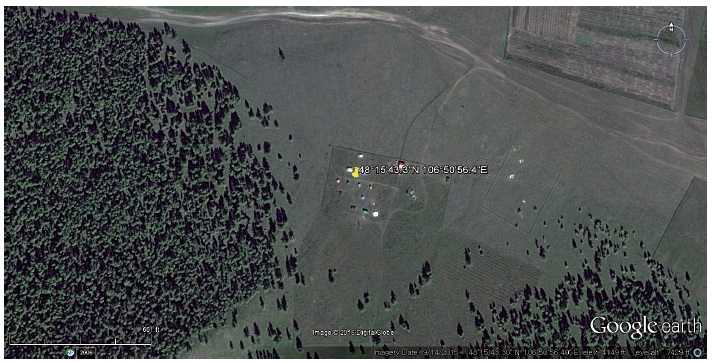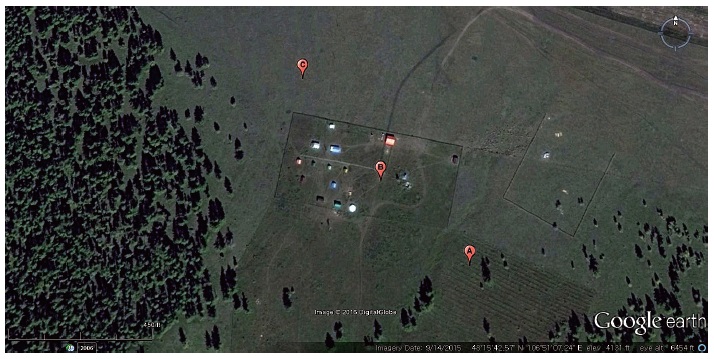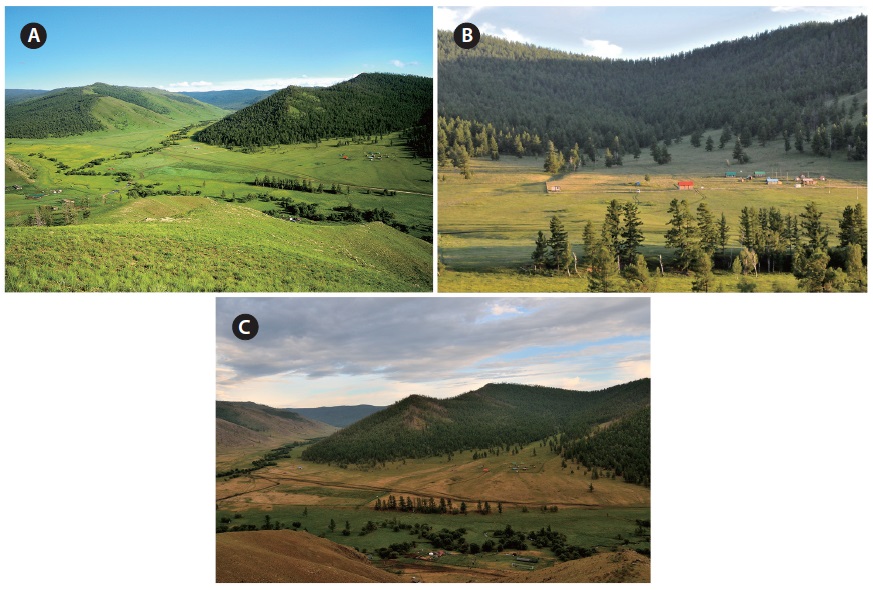



The rising temperature and uncertainties in rainfall associated with global warming are likely to increase the frequency and magnitude of climate variability and extremes. On the other hand, changes in climate also increase the risk of unexpected changes in nature and environment (Batima et al. 2005). Mongolia is a semi-arid and arid country in Asia where the climate has been changing more drastically than many other locations across the globe (Fernandez-Gimenez et al. 2015).
Recent studies revealed that many activities associated with climate change are effecting on plant-pollinator interaction. For instances, mismatch in phenology of flower production and of pollinator flight activity, thus altering the opportunity for interaction between the plants and animals (Memmott et al. 2007).
But our aim in this paper to disclose that how two different years climate is influencing on insect community at certain locality in Mongolia.
The study was conducted in The Mongolia-Korea Biodiversity Research Field Station and Forestry Research-Training Center (FRTC) which is located in the territory of Udleg bag (Tusgalt Valley), Batsumber soum of Tuv province (48°15′43.3″N 106°50′56.4″E) between June 2014 and August 2015 (Fig. 1). On the west side it is surrounded by forests and on the north by the river stream. East and south of the Udleg Station is dominated by grazing grassland and field of crop (Fig. 2).
The data on the insect community are collected, covering full flowering season from June to August in 2014 and 2015. In order to include all species of insects in Udleg Station, data was collected in three different sites. The sites were demonstrated different vegetation type. One of them was around edge of forest-mesophytic plants were dominated in this area (A), another one was in ungrazed area or inside the fence that has been kept for more than 9 years-in this site species diversity was significantly higher than other two sites (B) and last one was in grazed areaspecies diversity was low (C) (Fig. 3). Data was collected three times a day and different hours (morning, afternoon, evening). As a tool for collecting insects we used a butterfly net. Insect specimens were killed in ethyl alcohol and finally pinned for easier identification and private collection. Also pictures of insects were taken on natural by using NIKON D300 camera.
In 2014, a total of 305 insects from 6 orders was recorded. Hereof 88 dipteran species from 16 families were identified. The remaining 36 dipteran species were unidentified. 44 species of Lepidoptera, 33 species of Coleoptera, 31 species of Hemiptera, and 73 species of Hymenoptera were sampled.
But in 2015, these number of species noticeably decreased, total 150 insect species was recorded. Thereof 58 species of Diptera, 26 of Lepidoptera, 13 of Coleoptera, 12 of Hemiptera and 41 of Hymenoptera were recorded (Appendix). There is no significant difference between occurrence percentages of each orders in both years (Fig. 4).
From year to year, weather conditions is becoming unpleasant and deteriorating. It’s effecting on a lot of things such as growth, development and breed of animals and plants. Furthermore, these also are generating more and more positive or negative consequences. In 2015, weather conditions were relatively dry and windy in June and July, while in August it was heavy rain compared to 2013 and 2014 (Fig. 5). As shown in Fig. 4 and 5, the different weather conditions affected vegetation and insect community during the years. But in this paper we considered only insect community. Number of insect species was decreased in last year study. Also some families of Coleopteran and Hemipteran did not appear in 2015. It may be the reasons of this situation that make it possible for phenological drift of host plant or dry, windy conditions. Hereupon, insect species of these families tend to be vulnerable on climate change. On the other hand, it’s possible for species of new families to appear which favor the warm temperature and dry conditions in last year study. Therefore, we need to study more on this data.





